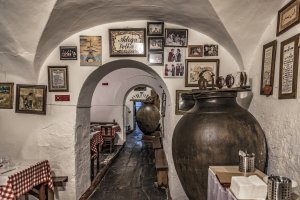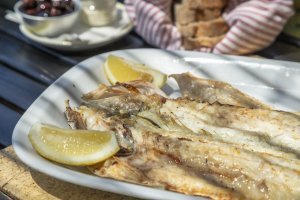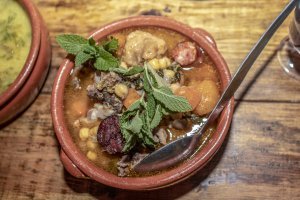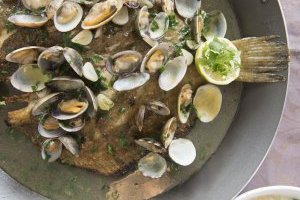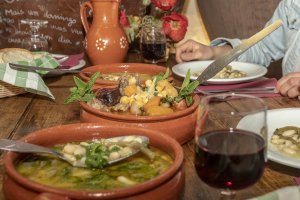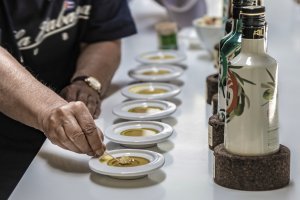Discover the Flavors of Portugal's Soul
Influenced by a Mediterranean climate and Roman and Moorish heritage, the Alentejo cuisine is unique in Portugal. There is influence from the Age of Exploration too, where seasonings like coriander arrived from the East.
It is a whole other world of flavors, with olive oil, local cheese, a wheat bread baked only in Alentejo, bread stews (Açorda), local meats and fish all playing leading roles. The Alentejo’s breads are rich, crusty and wonderful. But don’t forget the divine pastry and sweets created in monasteries and convents centuries ago or the many wines produced in the varied climates and soils of these lands.
In the Alentejo, a meal starts with a variety of appetizers. Cured ham, or Presunto de Barrancos PDO, is a local delicacy, and goat and sheep cheeses from Nisa and Serpa usually accompany thin slices of cured ham. Olives, whether black or green, harvested from olive groves throughout the Alentejo are a staple.
The pièce de résistance of food traditions in Alentejo is fresh bread dipped in olive oil, sometimes flavored with a drop of vinegar and a pinch of sea salt.
Other Alentejo specialties include roasted peppers, bread stews and octopus salad flavored with onion and peppers seasoned in olive oil. Some typical Alentejo foods share recipes with neighboring Spain, as in the case of the Alentejo gazpacho, a tomato and cucumber based soup served cold. The Bifanas de Vendas Novas are simple and tasty pork sandwiches served in a crusty white roll.
As for the main course, you can choose between local meat and fish. The Carne Alentejana PDO and Mertolenga PDO are types of beef unique to the Alentejo. One famed regional dish is Carne de Porco à Alentejana, Alentejo-style pork, a stew of pork cubes and clams with potatoes and lots of coriander. In fact, coriander is at the heart of Alentejo cuisine. The herb is most frequently used in the south of Portugal.
On the fish side, there is rich fish stew, fresh crab, grilled fish and octopus.
Many recipes call for rice or potatoes and a delicious sauce of tomato, garlic, onions and, of course, olive oil.
But there are also traditional vegetarian options in Alentejo cuisine, such as Açorda, bread stew with coriander. It may also be served with cod, one of several variations.
And we should mention two more things that are 100 percent Alentejo: Migas à Alentejana, a bread-based puree, and Alentejo sausages such as the thick Paio sausages that vary from town to town.
Almeirim is a farming town known for its Sopa da Pedra, or rich stone soup. Legend has it that Sopa da Pedra was invented by a traveling friar who asked the locals for a pot and water to make his stone soup. He kept asking for new ingredients, and the soup became a rich feast of meat, beans and vegetables.
No trip to the Alentejo is complete without dessert. Travelers with a sweet tooth have a lot to get excited about, from the traditional egg and cinnamon pudding Sericaia or Pinhoadas (pine nut nougat), to convent-made pastry, Pampilhos from Santarém and more.
In the Alentejo, an authentic meal can be found anywhere, from humble taverns to the region’s chef-driven eateries. There is no need to seek haute-cuisine restaurants: The tastiest and most heart-warming meals can be found in traditional (and affordable) eateries, where locals will treat you like family. Cuisine and hospitality are always linked in the Alentejo, so come sit at the table and be delighted by the flavors of Portugal’s soul. Find restaurants
